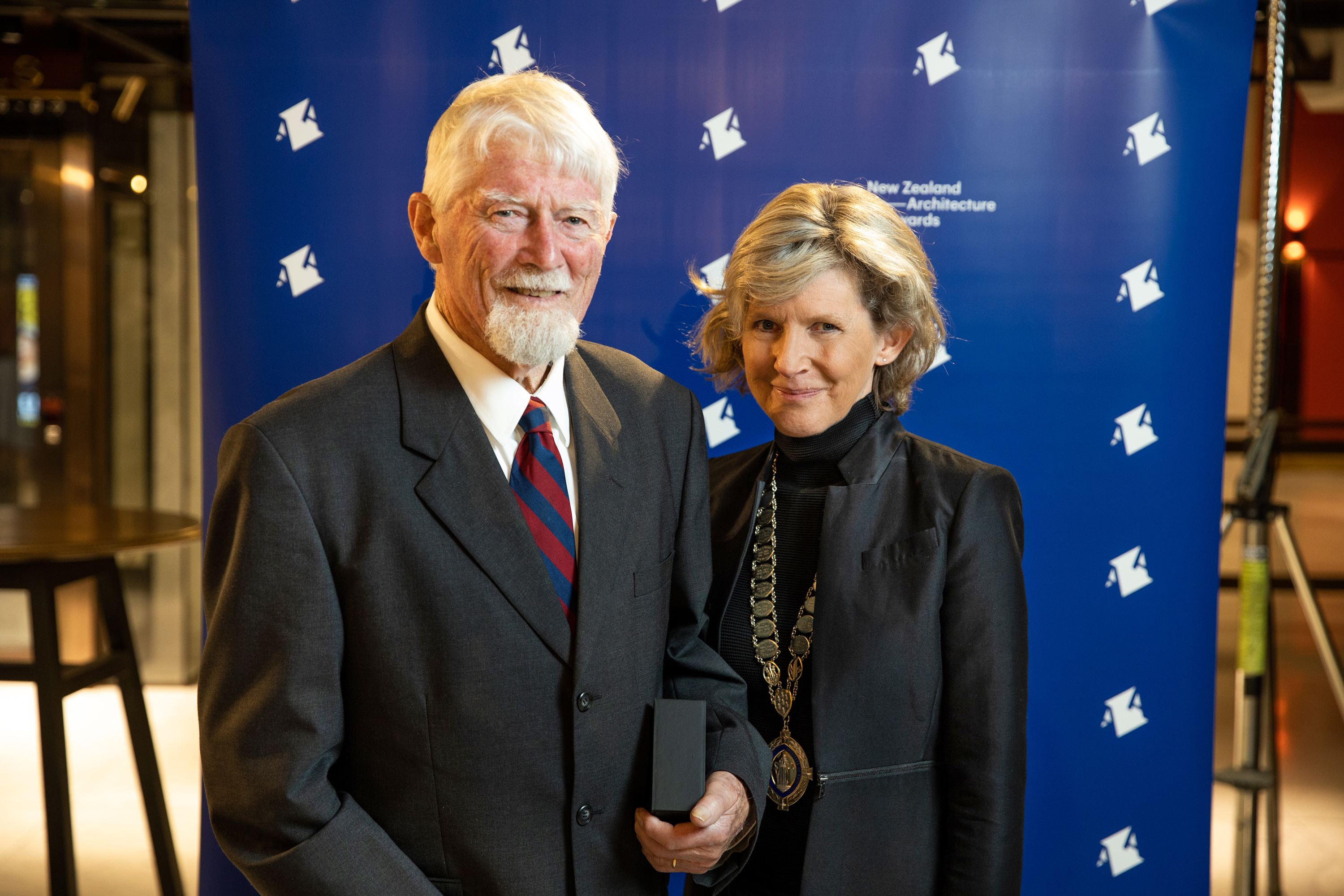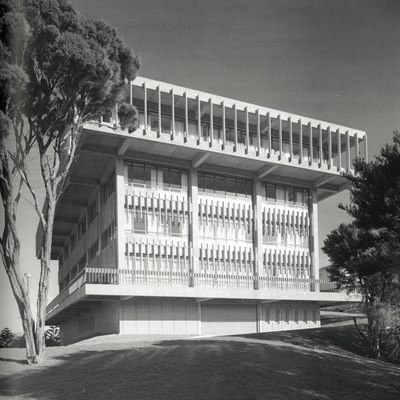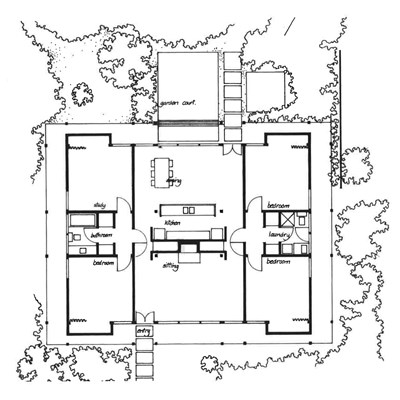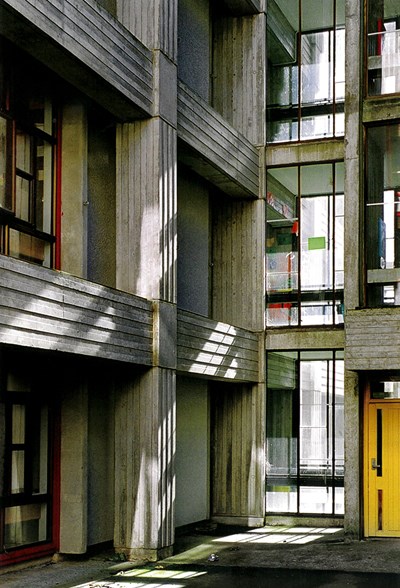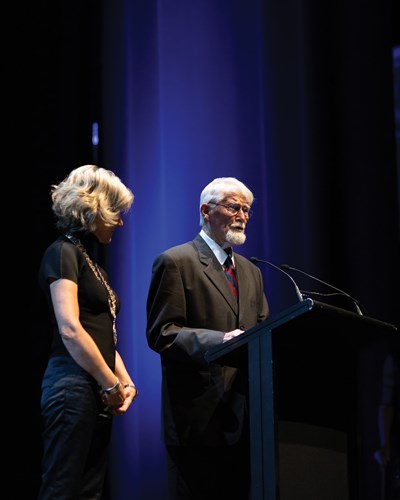Modernist, mentor and friend
A treasured mentor and a gentleman, the recent passing of Aotearoa’s last great Modernist, Bill Alington, represents the close of a chapter not only for architects in Te Whanganui-a-Tara Wellington, but nationally.
“Bill was an exceptional architect, one of Aotearoa’s greatest modernists, a hugely influential and inspiring teacher and mentor to many throughout his life,” says Judi Keith-Brown, past President of Te Kāhui Whaihanga New Zealand Institute of Architects.
“As my friends and colleagues attest, Bill was a true gentleman, a kind man of integrity and strong values. With great patience, he taught me to draw with a smooth piece of charcoal on a sheet of newsprint – his message was ‘keep drawing, let your eye and hand create the line, finish the drawing, never give up’,” recalls Judi. “Bill was a dear friend and many of us are deeply saddened by his passing, but his kind words and patient guidance will live on in those of us who were privileged to know him. Our thoughts and love are with Catherine, Giles and the family.”
In 2020, the Institute honoured Bill as a Distinguished Fellow, citing a career marked by a deep and abiding commitment to the social role of architecture, primarily demonstrated in his projects but also found in his teaching and ‘those long and generous conversations that so many colleagues have found enlightening’, reads the citation.
The award was one of many professional honours Bill received throughout his long and influential life. In the book 4 Architects, 1950-1980, by Stephen Stratford (2010), Bill was recognised alongside peers James Beard, William Toomath and Derek Wilson. Gordon Moller wrote the introduction and he and Michael Dudding interviewed the four architects. Individually and collectively, they ‘created an outstanding body of work, rooted in the philosophies of modern architecture, demonstrating a humanity of thought and a mastery of materiality and detail’, wrote the author.
When news of Bill’s passing was announced on Saturday, it reached a room populated with people who knew and adored the architect. They had gathered to hear Jeremy Hansen and Jade Kake discuss the work of another architect, Rewi Thompson. A long-time journalist, Jeremy honoured Bill with an impromptu tribute, recalling the first feature he wrote on New Zealand architecture being a profile of the home Bill designed for his family in Karori.
An outstanding work of mid-century modernism, it has Historic Place Category 1 status, and received a New Zealand Institute of Architects Local Award for Architecture in 2001, and the Institute’s Enduring Award for Architecture in 2007. Many years later, Alington House featured in Jeremy’s book Modern (2013) – ‘a model of pared-down efficiency’, he wrote.
Early life
Bill was born in Lower Hutt in 1929 and 20 years later entered his architectural cadetship with the New Zealand Ministry of Works (MoW). Early influences throughout this time included Government Architect F Gordon Wilson, cadet supervisor James Beard, and Professor Richard Toy of Auckland School of Architecture. From 1951 to 1955, Bill studied at the Auckland School of Architecture and, in 1956, on a Fulbright Travelling Scholarship, he went to Illinois, USA. He completed his MArch degree at the University of Illinois School of Architecture and, during that time, met with Mies van der Rohe, and visited buildings designed by the architect, and also buildings by Frank Lloyd Wright.
During 1956 and 1957, Bill gained private practice experience with noted British firm Robert Matthews Johnson-Marshall. While based in London, he took the opportunity to travel with his wife Margaret to see key works of Modernist architecture, including Le Corbusier's Ronchamp Chapel and Unité d’Habitation in Marseille in France.
On his return to New Zealand Bill resumed work with the MoW, completing the Gisborne Courthouse (Gisborne, 1962) and Meteorological Office (Wellington, 1965). In 1965, he entered private practice in a partnership offered by Allot Gabites and James Beard. After several iterations of private-practice partnerships, Bill established Alington Group Architects in 1983, retiring from professional practice in 2000.
Bill completed designs for a range of highly acclaimed civic buildings and smaller-scale community and church-related projects. “All of these projects were invested with a sensitive humanism appropriate to their scale and programme and all expressed a refined sensitivity to architectural proportion and detailing,” reads the citation accompanying Bill’s Distinguished Fellow award. “Bill developed an approach that yielded successful architectural results for many small community groups for whom the benefits of good design might otherwise have been out of reach.”
Throughout his career, Bill demonstrated an abiding commitment to the profession, serving as Te Kāhui Whaihanga New Zealand Insitute of Architects Councillor, Vice President, and Branch Chair. He contributed to the founding of the Architecture School at Victoria University, Wellington, and his teaching in the design studio inspired generations of students. “In all aspects of his career, Bill has given exemplary service to his profession and to New Zealand architecture,” says the Institute.
